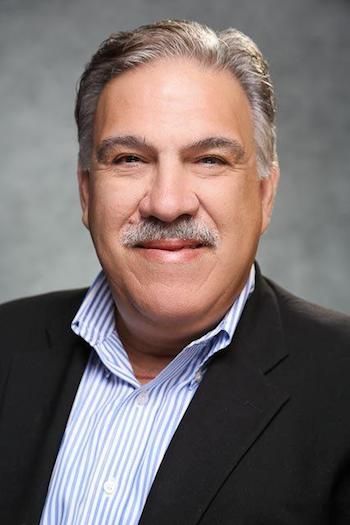Executive Director of the Center for Connected Health Policy: "It's about a culture change"
"We have to change that dynamic and think about the consumer at the center of the healthcare system," Mario Gutierrez says.

As the landscape of health continues to evolve, with massive advances at the technological level but widespread uncertainty in health policy, it’s difficult to determine the role that new technologies can play, or will be allowed to play, down the road. The Center for Connected Care Health Policy, or CCHP, has worked for nearly a decade now to advocate for the use of telehealth as a means to streamline care, lower costs, and put patients at the center of the healthcare system. Initially begun to advocate for legal telehealth reform in the state of California, the CCHP has since become the leading, federally-designated national body for the movement.
Mario Gutierrez, the Center’s executive director, kindly granted HCA News an interview (fittingly, conducted by telephone) this March to speak about the organization’s aims and the current state of telehealth policy across the country. In the first part of the conversation, Mr. Gutierrez spoke of his and his group’s backgrounds, as well as the systemic changes he believes are necessary to move health policy into the 21st century.
Can you just give a quick rundown of the CCHP’s history and mission?
Our organization is an independent policy, research, and education center that’s specifically focused on the issues that impede or advance the use of telehealth and connected care technology. We initially were started by a California foundation to look at reforming California’s laws related to telehealth reimbursement and definition and all of that. We were successful in doing that, and that became a springboard for us to apply to become the national telehealth policy resource center. We have been funded by HRSA [Health Resources and Service Administration] for the last 5 years to be a public access resource on telehealth policy at the state and federal level.

What brought you, personally, into this mission?
My background has always been in health. My graduate training is in public health and health policy, and I’ve always worked either at the community level or in private foundations. I was with the California Endowment for 12 years as a senior program director overseeing their rural and community health services for the state, and in the mid ‘90’s we launched a major initiative to invest in telehealth to be able to respond to the demands for access to care in what is a very large rural state, once you get past the highly populated coastal areas.
I see this as a vehicle for improving access for the underserved and also for building healthier communities by ensuring we have virtual connections to keep people healthy in their communities. It’s not so much that I’m a big fan of the technology, but rather that I’m a big fan of what the technology can achieve. I became the director here about 5 years ago, I initially started as a senior policy analyst and the executive director moved on to go work for the foundation that actually funds us, and they asked me to become the director and I have been ever since.
You were recently quoted in a Wired article in response to a Health Affairs study, which begs the question: how do you perceive the state of telehealth now as a service in the US?
Well I guess it’s all over the map, literally and figuratively. Telehealth is starting to mature and is being recognized as more than just an esoteric tool in hospital care, given the explosion of direct-to-consumer. Things like those in the article, like Teladoc and American Well, are primarily there as a convenience to the consumer, to give a quick diagnosis and be able to deal with a problem as a one-off.
That has a role, obviously, people like them and are using them, those companies are making lots of money. In terms of telehealth, as a value proposition to the healthcare delivery system to help achieve the triple aim of healthcare reform (improving value and patient experience to get better outcomes), we still have a long way to go. Because they have discretion over their Medicaid dollars—a pretty wide discretion as to how and what they fund—our research has indicated that states are still far behind in recognizing the full value of telehealth, as well as providing the evidence and the incentives for both the insurers and the healthcare delivery systems to take greater use of it.
A large part of that has to do with a lack of leadership from the federal government and from CMS, in this regard. Medicare is still stuck in the last century of thinking, they only pay for one modality of telehealth, that being live video. That form is the most inefficient, from a physician to a specialist, when the physician has to be in a facility that is qualified as being in a very strict, rural, underserved area.
It means, for all intents and purposes, telehealth is not paid for by Medicare. Even in the movement towards more of a value-based model with Medicare advantage plans, which has been federal policy now for the last couple of years, the requirements under those plans make it very difficult to cover those costs. So, even though health systems may see the benefit of it in improving the quality and efficiency of care, if they do it they have to basically eat the costs or pass them on to the consumer.
That answer tailed into a few of follow-ups, but latching on to one point: you commented that live video might be the most inefficient form of telehealth, so what would be the more efficient uses of telehealth in your eyes?
We think of it in the context of the value of telehealth being, one, diagnostic and treatment services. That could be either live video or it be done asynchronously, through secure email. Particularly with dermatology and ophthalmology and a few other specialties, it's possible to provide all the information necessary for a specialist to make an evaluation so a diagnosis can be done asynchronously, so that the specialist is using their time in the most efficient way possible and not clogging up their waiting and examination rooms.
But beyond just diagnostic and treatment services, there’s real value to virtual technologies in enhancing care coordination so that there’s more enhanced communication between physician and specialist, between physician and consumer, between consumer to their health system. And then there’s the other aspect of remote monitoring. That’s another area that’s highly underutilized. With the technology being what it is today, we can keep people healthy at home, particularly the aging and disabled, and delay institutionalization, which is where the really expensive costs of the health system live, particularly in Medicare.
There’s a whole continuum here that we can take advantage of, it’s just a very narrow perspective as to what the federal government is willing to consider. It’s mainly because they see telehealth as a unit of service that’s separate from a healthcare visit. We see telehealth, and I think the field sees telehealth, as a modality to help enhance and deliver better care. It’s not a separate service, but rather another, more efficient way of delivering the same services. I think that’s been the real hang-up.
In addition to that, what do you see as the biggest obstacles? How do you see access expanding?
The incentives all have to be in line, both for the healthcare delivery system to want to do it, but also for the payers to encourage its use, whether it’s a public payer or a private payer. So that’s part of it.
The other is deeper, in the sense that it’s also about culture change in how care is delivered. For many physicians and health systems, it’s a big leap to go from, in their own minds, having the physician and the healthcare institution being at the center and having the consumer physically come to them. We have to change that dynamic and think about the consumer at the center of the healthcare system, and build healthcare in a way that responds not just to convenience but also to better informing and involving the consumer in their own care.
That to me is a critical mind change, and it’s not ingrained in our medical school training. We tend to perpetuate traditional medical styles, the traditional brick and mortar. The idea of going to the doctor is still dominant, as opposed to having the services be provided in the best way possible to the consumer. Consumers are more likely to utilize telehealth if it’s made available. I think Kaiser Permanente has been a real example of that, in making it available and seeing real uptake in its utilization.
So outside of looking for policy change, does the CCHP do anything in terms of trying to shift perception?
Not at the patient level. Part of what we do in terms of our newsletters is to provide information and education that is readily accessible and usable across the spectrum, whether it’s the consumer or a health system or a payer. It’s primarily around policy, but also around educating on different modalities of care and innovations in the field.
We’re also part of a large, nationwide consortium of telehealth resource centers that are all funded through the same agency that we’re funded by. The primary responsibility is to provide low-cost technical assistance to telehealth providers and systems to be able to do what you’re implying: how do we get into it, how do we select equipment, what’s the best way to organize a healthcare delivery system using telehealth? There’s a regional resource center for every part of the country, and we’re kind of the lead administrating organization for that, so we coordinate with all of them.
Podcast: Adoption of Healthcare Tech in the Age of COVID-19 with Dr Kaveh Safavi
June 22nd 2021Kaveh Safavi, MD, JD, global health lead of Accenture Health, discusses how the pandemic influenced the speed at which healthcare organizations adopted new technologies and how this adoption is impacting patient care.